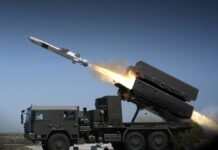The sinking of the Israeli destroyer Eilat by three Raduga P-15 Termit (SS-N-2 ‘Styx’) missiles on 21 October 1967 spurred the need for the US Navy (USN) to develop an effective counter to this new form of attack. A programme designated the Advanced Surface Missile System rapidly took shape, but was soon renamed Aegis. This was not an acronym, but a reference to an ancient Greek myth which told how the god Zeus and goddess Athena had carried an all-powerful shield of this name.
The resulting ship-defence system was deployed from 1983 onwards on the then-new Ticonderoga class cruisers, and teamed a new missile designated Standard Missile 2 (SM-2) with a Mk 99 advanced fire-control system, the SPY-1 passive electronically scanned multi-function radar, the Mk 1 weapons-control system, the Mk 1 command and decision system, and a launcher for SM-2 missiles.
Later examples of the Ticonderoga class introduced improved systems. Commissioned in February 1989, Princeton (CG 59) was the first to be fitted with the improved SPY-1B radar, while Chosin (CG 65), commissioned in January 1991, was the first to receive UYK-43 computers.
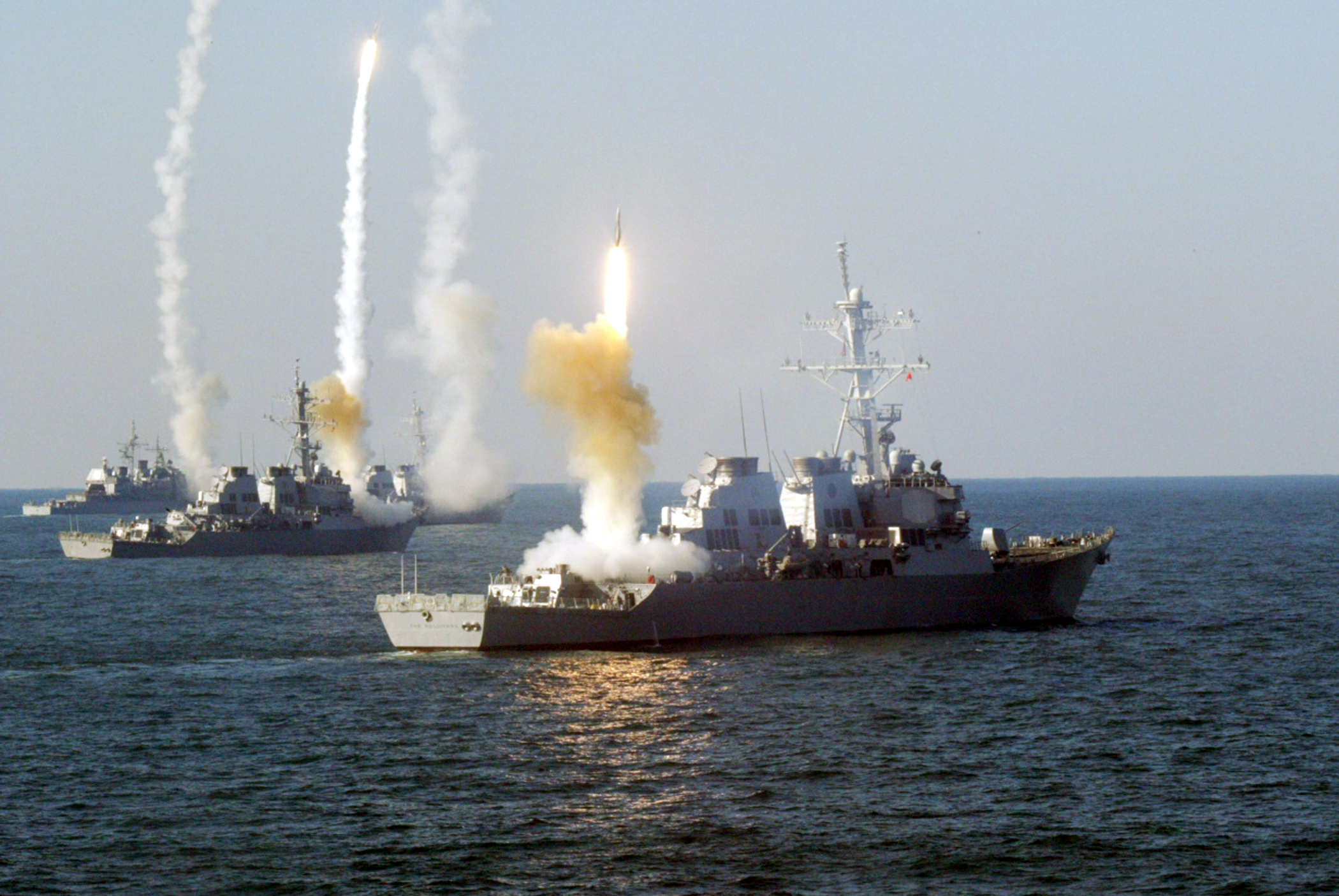
Prime contractor for Aegis was originally the Missile and Surface Radar Division of RCA, and later became the Government Electronic Systems division of General Electric, which was sold to Martin Marietta, which in turn was acquired by Lockheed Martin.
The US Navy keeps Aegis updated by a series of four-year-long Advanced Capability Build (ACB) projects. ACB 16 is the latest, and involves four incremental deliveries – Baseline 9.2.0, Baseline 9.2.1, Baseline 9.2.2, and Capability Package 22-1 (originally known as Baseline 9.2.3). This fourth delivery is intended to provide additional capabilities, and to resolve what the US Office of the Director, Operational Test & Evaluation (DOT&E) described as “technical issues with certain hardware configurations”. Capability Package 22-1 was used in July 2022 when the USN conducted two SM-2 firings against cruise missile surrogate targets. ACB 16 will be followed in FY2024 by ACB 20.
The Aegis system software incorporates artificial intelligence (AI) features intended to detect, and identify emerging threats by exploiting electronic signatures present in the data. As new threats emerge, software updates can be transmitted to the Aegis fleet.
Modernising the Aegis fleet
The first five Ticonderoga-class cruisers had been retired by the end of 2005 – hardly an unexpected fate since they used the mechanically-trained and manpower-intensive Mk 26 dual-purpose twin-arm missile launcher. From the sixth vessel onwards, the Mk 41 vertical launch system (VLS) was installed, but retrofitting this to the Mk 26-equipped ships would have required major structural ‘surgery’.
Under an upgrade programme begun in the early 2000s, the oldest VLS-armed Aegis cruisers – from Bunker Hill (CG 52) to Chancellorsville (62) – were modernised, receiving combat systems upgrades, including Cooperative Engagement Capability (CEC), an improved SPY-1 radar, and an open-architecture computing environment. They have also been given hull, mechanical, and electrical (HM&E) upgrades. Despite this, these ships are reported to be becoming unreliable and difficult to maintain because of their ageing hull and infrastructure.
A follow-on upgrade programme begun in 2015 for later vessels from Cowpens (CG 63) to Port Royal (CG 73) was intended to update the ships’ combat systems and HM&E systems, and extend their service lives from 35 years to 40 years, but this scheme has experienced its own share of problems. The extent of the structural repairs due to take place on each ship once existing equipment had been stripped out was not easy to predict, particularly in the case of older vessels which were likely to be in poorer condition.
Time is running out for all the VLS-equipped Aegis cruisers. Vella Gulf (CG 72) was decommissioned in August 2022, followed in September by Monterey (CG 61), Hué City (CG 66), Anzio (CG 68), and Port Royal (CG 73). The remainder are expected to follow by 2028. That list of decommissioned ships contains some surprising entries. Anzio and Hué City had been placed on reduced readiness ahead of planned modernisation, while Vella Gulf and Port Royal were the last two Ticonderoga-class ships to be commissioned, and had been retired after only 28 years of service.
The Ticonderoga-class cruisers are due to be replaced by Flight III Arleigh Burke-class destroyers, the first of which is due to be commissioned in 2023. Designed to incorporate an improved sea-keeping hull form, and to have a reduced infrared and radar cross section to their predecessors, the DDG 51 class has been under construction since 1985. Deliveries are expected to continue beyond 2027, giving the type the longest production run of any USN surface combatant.
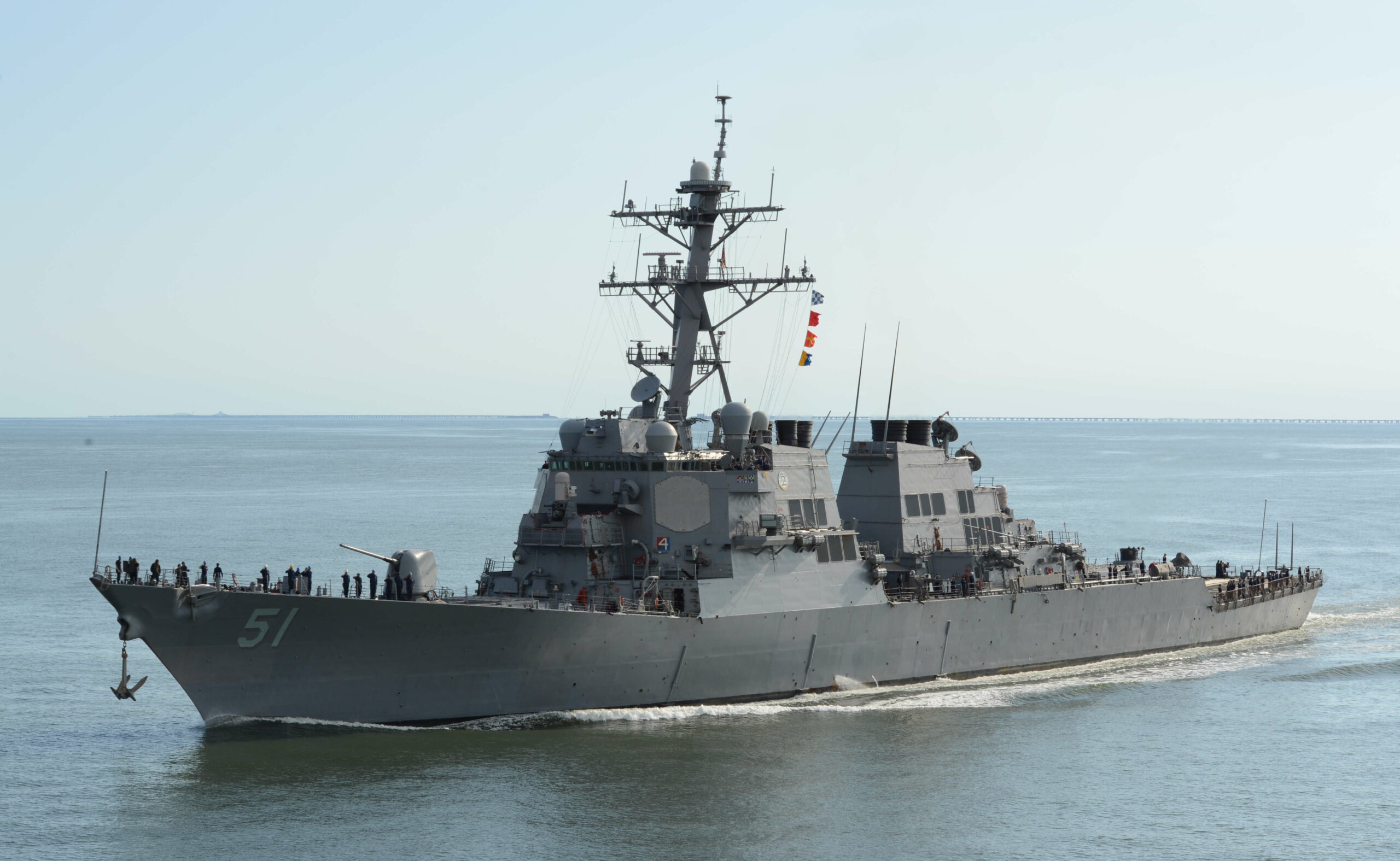
Credit: US Navy
DDG 51 to 71 were built to the Flight I standard, while DDG 72 to 78 were Flight II, a version able to launch and control the SM-2ER Block IV missile. DDG 79 to 112 were classified as Flight IIA. They featured Cooperative Engagement Capability (CEC), and from Pinckney (DDG 91) onwards were fitted with the SPY-1D(V) radar.
No DDG-51s were procured between FY2006 and FY2009, but procurement of Flight IIA standard ships resumed in FY2010 with DDG 113. The first three were classified as Flight IIA Restart vessels, while a further ten were built to the Flight II Technology Insertion standard, which featured some of the improvements developed for the planned Flight III vessels.
Ships procured from FY2017 onwards are being built to the Flight III standard. This includes a new SPY-6 radar (formerly known as the Air and Missile Defense Radar). Part of an updated AEGIS Weapon System known as Baseline 10, this is more capable than the SPY-1 variants installed on all previous Aegis cruisers and destroyers, and allows the ship to simultaneously conduct Anti-Air Warfare (AAW) and Ballistic Missile Defense (BMD) operations.
Laid down in November 2019 and launched in June 2021, Jack H Lucas (DDG 125) is the first Flight III standard vessel. It began sea trials in mid-December 2022, finishing these a day early because all objectives had been met. Previous trials conducted at land-based test centres in Moorestown, New Jersey, and at the Pacific Missile Range Facility in Hawaii had used only a single SPY-6 antenna array, but the December sea trials were conducted using all four arrays of the definitive system, and had identified several software issues which are expected to be solved before the next round of at-sea testing.
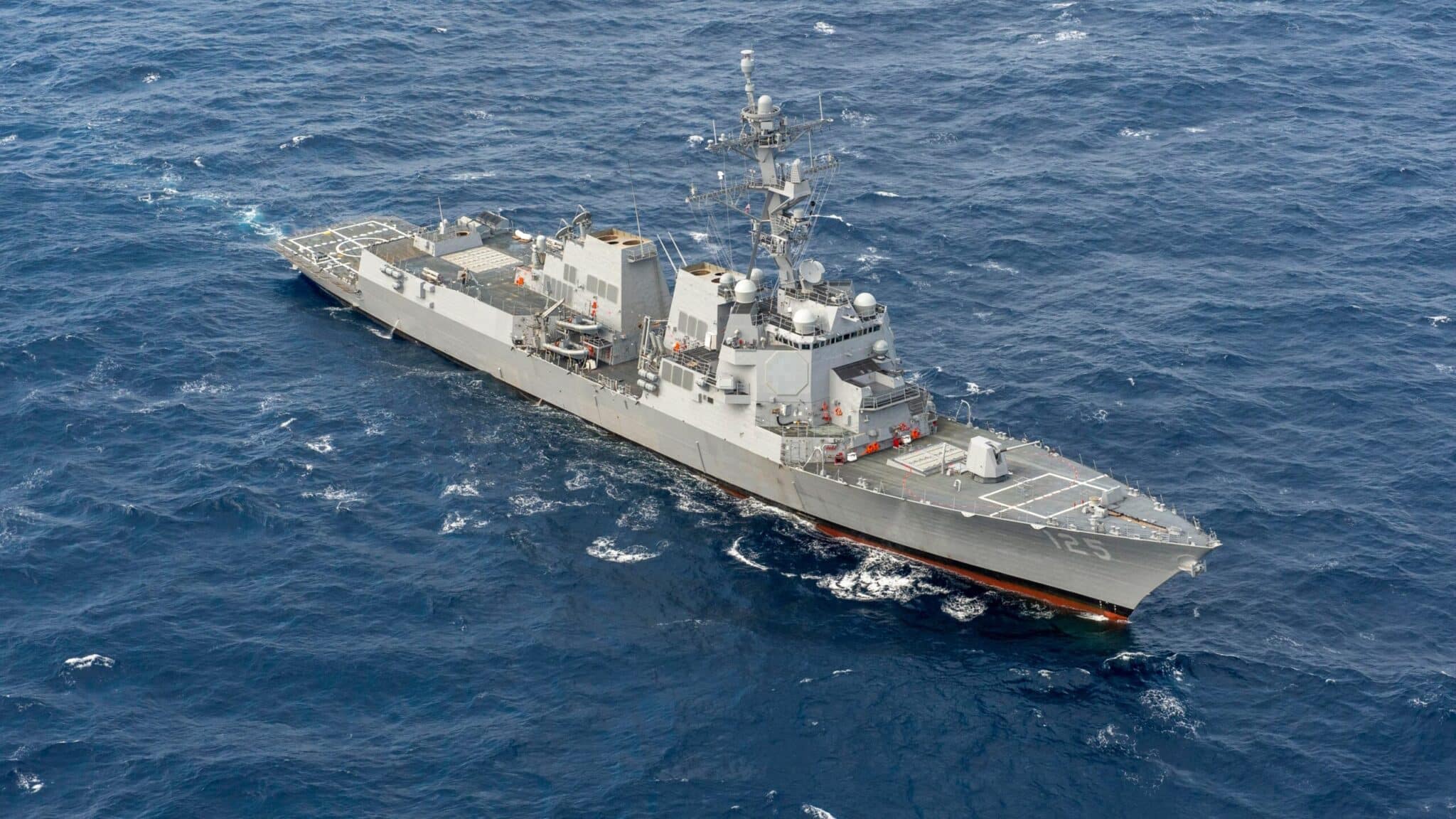
In the short term, the Flight III version will provide what the USN believes will be the world’s best Integrated Air and Missile Defense (IAMD) combat system. Although likely to remain in service through the 2060s, these ships will have a limited ability to accept future upgrades if these require additional space, weight or power.
As with the Aegis cruisers, a modernisation programme began in 2010 with the Arleigh Burke (DDG 51) is providing a mid-life upgrade. This includes installing the Baseline 10 version of the Aegis Combat System with an open-architecture computing environment, and a version of the SPY-6(v)4 radar incorporating enhancements intended to improve radar performance in the littoral regions. An improved Multi-Mission Signal Processor integrates the ship’s air and ballistic missile defence capabilities.
Enter the DDG(X)
Under current plans, the USN’s next Aegis-equipped class will be the DDG(X) destroyers. Expected to have a displacement of around 13,500 tons, these would have the same Aegis system as the Flight III DDG 51, but would have more growth margin in terms of space, weight-carrying capacity, electrical power, and cooling capacity in order to facilitate the introduction of additional or higher-power equipment and weapons (including directed-energy weapons) during their expected service life. Options for future growth include installing Large Missile cells in place of 32-tube VLS cells, or additional VLS or Large Missile cells. Although the USN had planned to procure the first of the new class in FY2030, this date could slip to ensure that the required technologies are sufficiently mature.
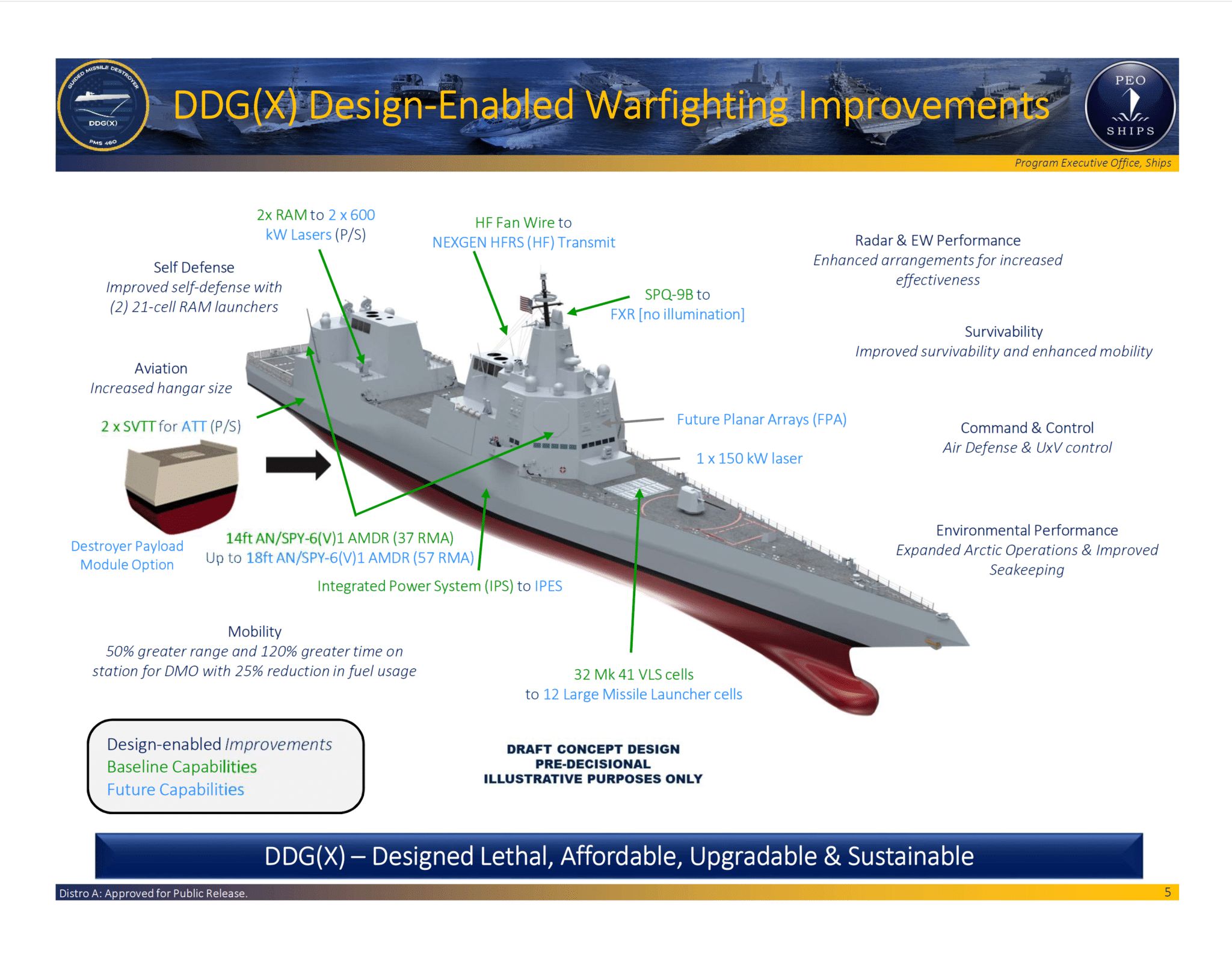
Credit: US Navy
Aegis Ashore
As its name suggests, Aegis Ashore (AA) is a land-based version of the system. It uses the same SPY-1 radar, electronic systems, and vertical launcher as the Arleigh Burke-class destroyers. Intended to counter short- to intermediate-range ballistic missile threats, it is deployed at three sites: the Aegis Ashore Missile Defense Test Complex at the Pacific Missile Range Facility (PMRF) in Hawaii, at Deveselu in Romania, and at Redzikowo in Poland. The Romanian site became operational in 2016. Although the Polish site was originally due to be completed in FY2018, significant construction delays saw this date slip until FY2022.
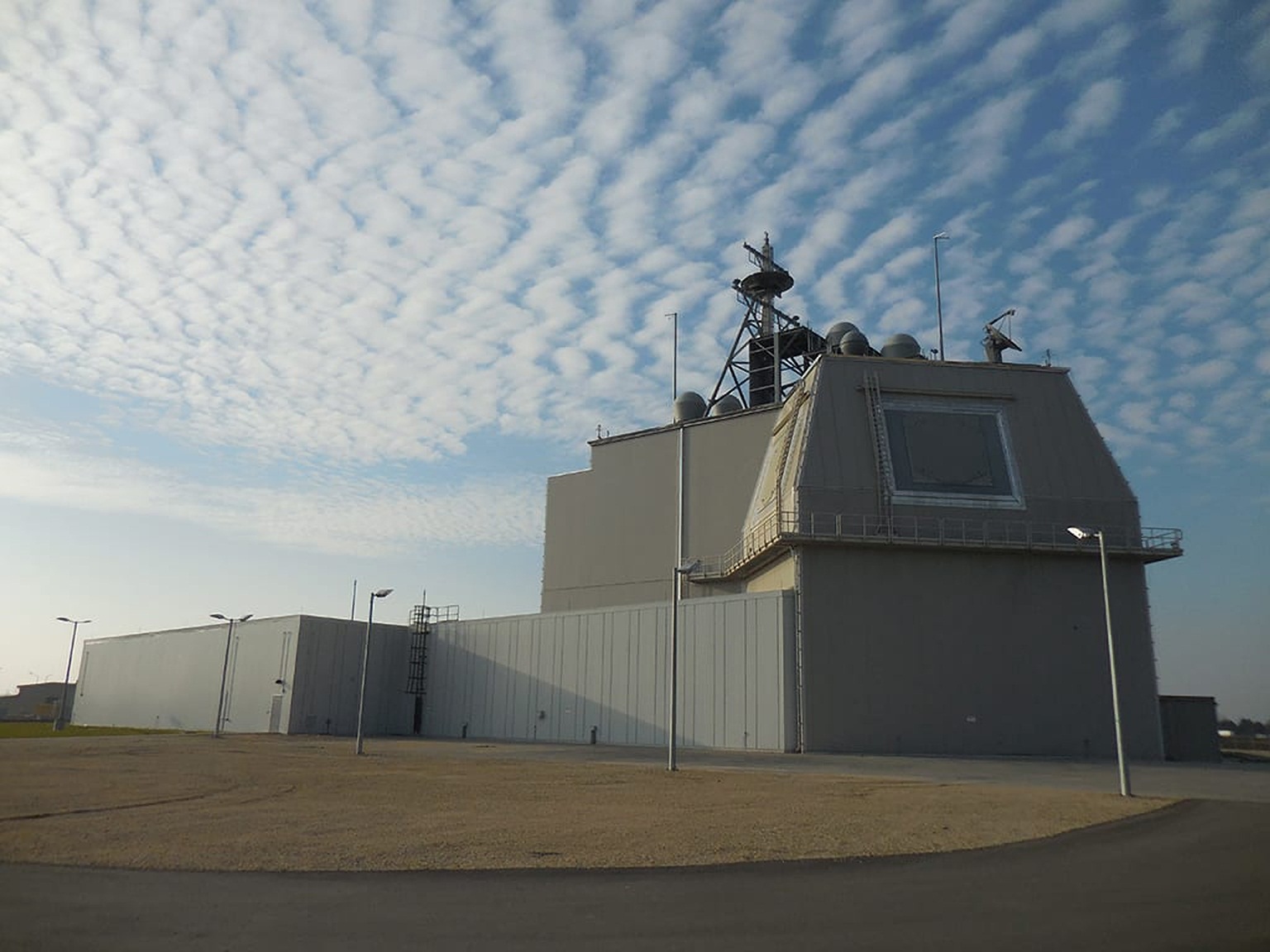
In December 2017, the Japanese government gave the go-ahead for the planned purchase of two Aegis Ashore systems to be equipped with the new SPY-7(V)1 radar and armed with SM-3 Block IIA or even SM-6 interceptors. The chosen sites were at a Ground Self-Defense Force training area in Akita Prefecture, and the Mutsumi training area in Yamaguchi Prefecture. In practice, the plan was short-lived, and was abandoned in 2020 due to concerns over the likely damage to residential buildings that could be caused by falling spent rocket boosters.
Other navies
Aegis-equipped ships are now planned or in service with Australia (three Hobart class destroyers), Japan (four Kongō class destroyers, two Atago class destroyers, and two Maya class destroyers), South Korea (four of six planned KDX-III Sejong the Great class destroyers), Norway (four Fridtjof Nansen class frigates), and Spain (five Álvaro de Bazán class frigates, and five planned Bonifaz class frigates).
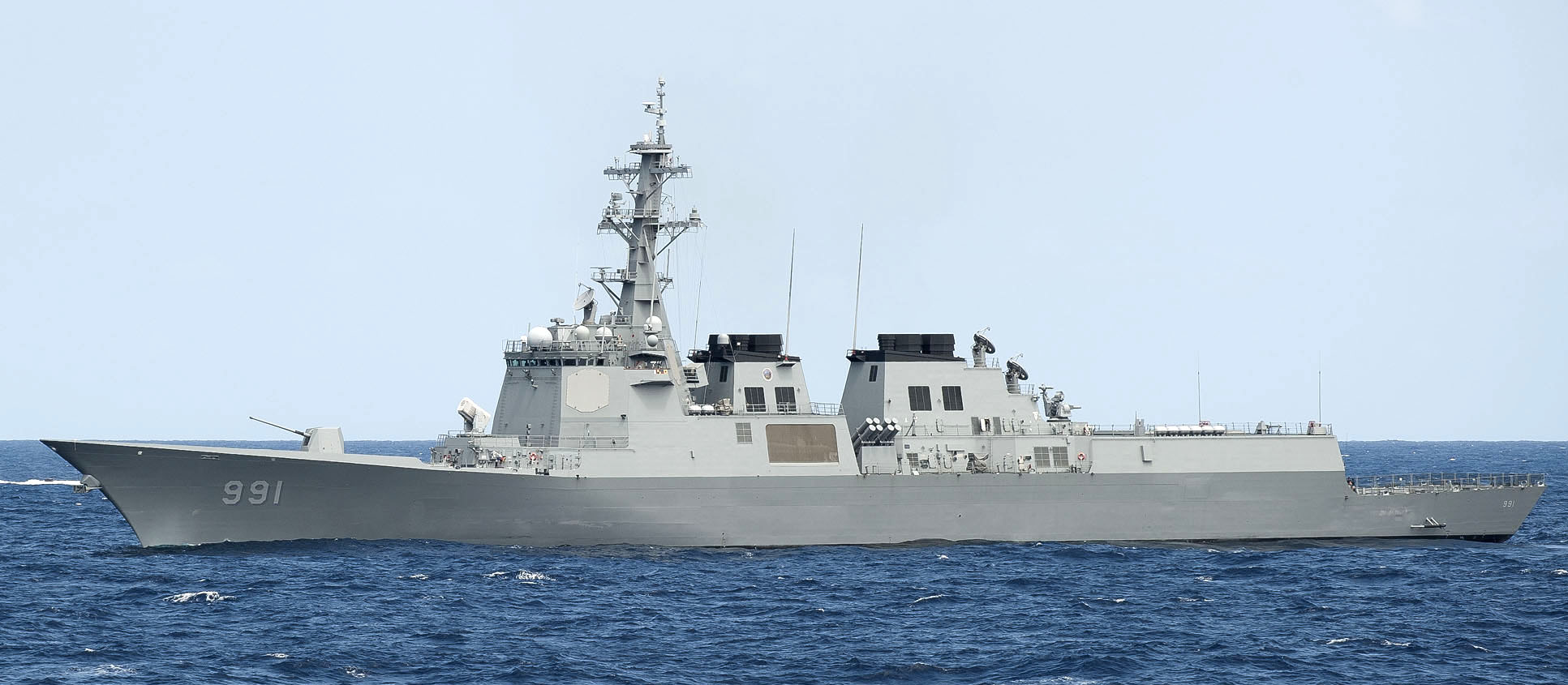
Credit: US Navy
The displacement of these Aegis-armed ships varies. At 10,600 tons full load, the Sejong the Great-class destroyers are the heaviest, and can carry 32 more missiles than the Arleigh Burke class, while the Fridtjof Nansen class frigates are the lightest at 5,290 tons full load, so carry a smaller and less-powerful version of the SPY-1 radar.
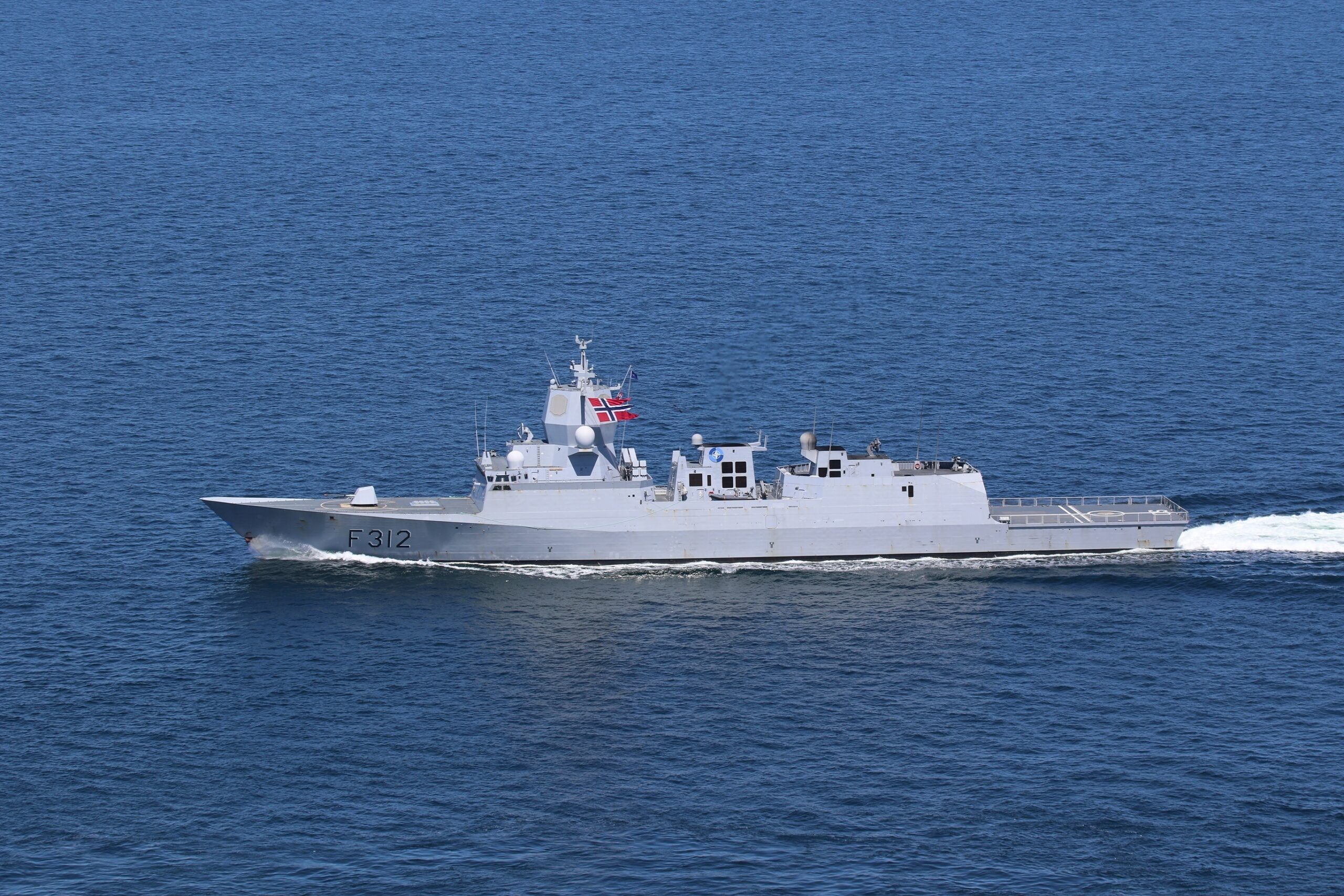
Most of these non-US ships operate Aegis as a defence against aircraft and anti-ship missiles; only the Japanese vessels are BMD-capable. The Japan Maritime Self-Defense Force (JMSDF) currently has eight Aegis-equipped destroyers (DDG). The first was Kongō, which was commissioned in 1993, and in 2006-7 was updated to handle the SM-3 block IA missile.
Built to replace the aging Tachikaze class destroyers, the Atago class are an improved and lengthened version of the Kongō class. Originally equipped with the Baseline 7.1 version of Aegis and armed with SM-2MR Block IIIA/B, they were later updated to the Baseline 9C standard in order to handle the SM-3 Block IA and IB. The Maya class were the first Japanese Aegis ships to be built with BMD capability from new. Under the Defense Buildup Program introduced in December 2022, the JMSDF plans to increase the number of its Aegis-equipped destroyers, by adding two more to the current eight.
In 2022, the Japan Ministry of Defense also announced that the JMSDF planned to operate two examples of what it called “Aegis system equipped ships”. Intended to replace the originally-planned Aegis Ashore installations, these are expected to be in the 20,000 ton class, so will be the largest combat vessels operated by the JMSDF. Work on the first is to begin in FY2023, allowing entry into service in FY2027, followed by the second in FY2028. The only artist’s impression released so far shows a ship armed only with vertical launchers, If deployed only in coastal waters, it could be protected by land-based or air assets, so would not require additional on-board weapon systems and the personnel needed to operate these.
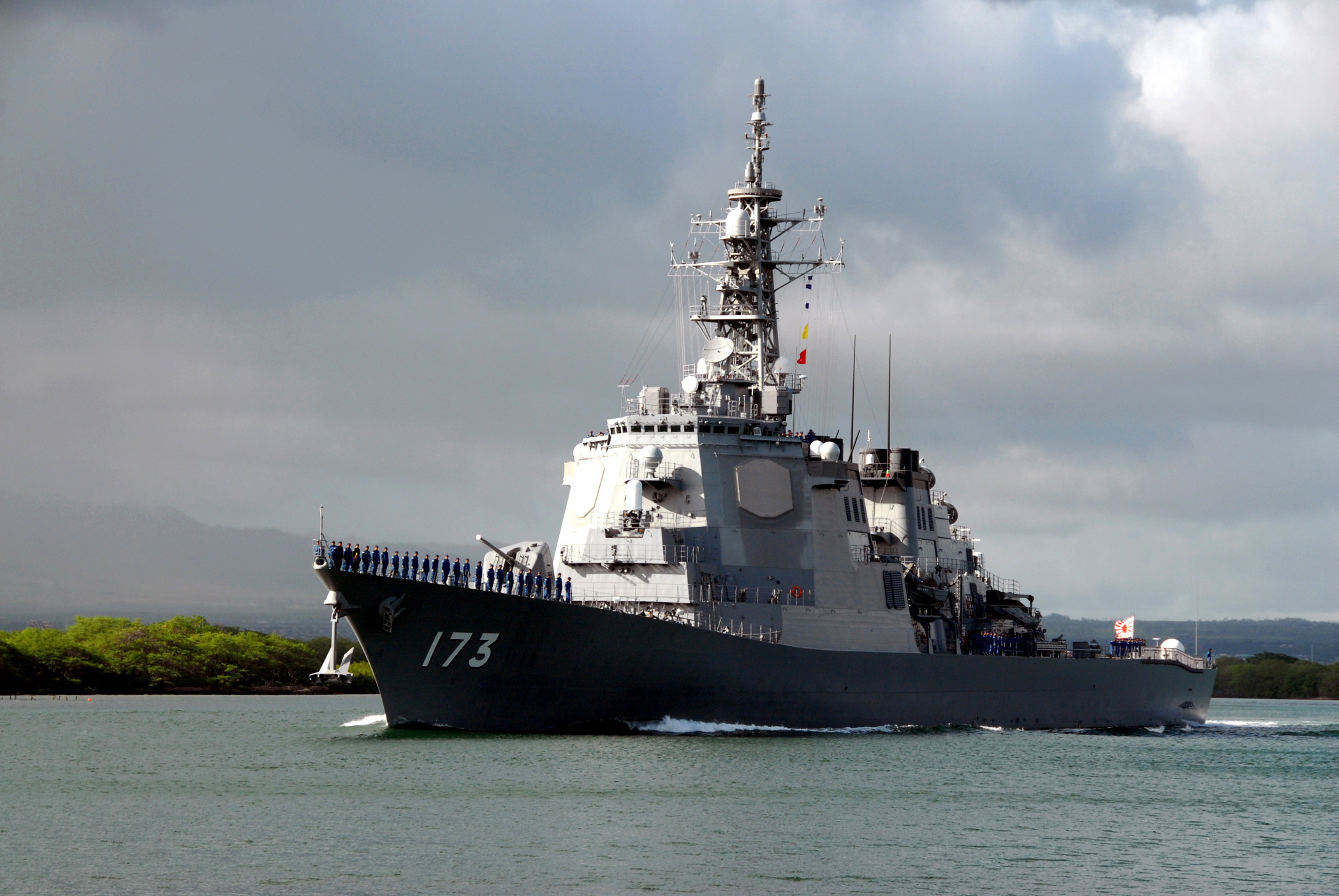
Credit: US Navy
Standard Missile 2
The Standard Missile programme was begun in the early 1960s with the intention of replacing the earlier Tartar and Terrier, which were single-stage and two-stage naval surface-to-air missiles. Taken into service in 1969, Standard MR and Standard ER physically resembled Tartar and Terrier, but were all-electric missiles and used solid-state electronics.
They were soon followed into service by improved versions designated Standard Missile 1 (MR) and Standard Missile 1 (ER). Like Tartar and Terrier, these were developed by the General Dynamics Pomona Division, which was later sold to Hughes Aircraft Company, where it became Hughes Missile Systems, and which in turn was absorbed into Raytheon.
For its Aegis-equipped ships, the US developed the Standard Missile 2, which featured an inertial mid-course guidance package that receives command updates from the shipboard fire control system. This minimises the use of shipboard systems during the engagement, allowing the ship to simultaneously engage multiple threats. Each target needs to be illuminated by the ship’s radar only during the final phase of the attack when the missile is being guided by its nose-mounted semi-active radar seeker.
Progressive improvements to the SM-2 missile resulted in the Block II, III, IIIA and IIIB versions. These improved missile performance against more demanding classes of target, and the Block IIIB added an infrared guidance mode to help cope with severe enemy Electronic Countermeasures (ECM).
In 1987 the USN began work on the SM-2 Block IV. This incorporated digital technology originally developed for missiles such as Patriot and AMRAAM, and added a tandem-mounted booster with thrust-vectoring control. Development was protracted, and the missile did not achieve initial operational capability until 1999. Although a planned Block IVA upgrade was to have created dual-mode, radio frequency/infrared guidance and modifications intended to improve ABM performance, the programme was eventually cancelled in December 2001. However, the basic configuration of the Block IV version was carried over into what became the Standard Missile 3.
Standard Missile 3
Designed to intercept short- and intermediate-range ballistic missiles, the RIM-161 Standard Missile 3 (SM-3) retains the Mk 72 solid-propellant rocket booster, Mk 104 Dual Thrust Rocket Motor (DTRM), steering control section, and midcourse missile guidance system used by the SM-2 Block IV, but also has a Mk 136 Third Stage Rocket Motor (TSRM), and a kill vehicle that uses a long-wave infrared (LWIR) seeker teamed with a divert and attitude control thruster able to manoeuvre in the early exo-atmospheric phase of flight in order to achieve a kinetic ‘kill’.
During a test firing conducted by the AEGIS-cruiser Lake Erie (CG 70) at the US Pacific Missile Range Facility in Kauai, Hawaii on 25 January 2001, Flight Test Round 1A demonstrated stability and control through powered flight, followed by third-stage separation and motor burn. The kinetic-warhead kill vehicle successfully detected a target which simulated an incoming ballistic missile.
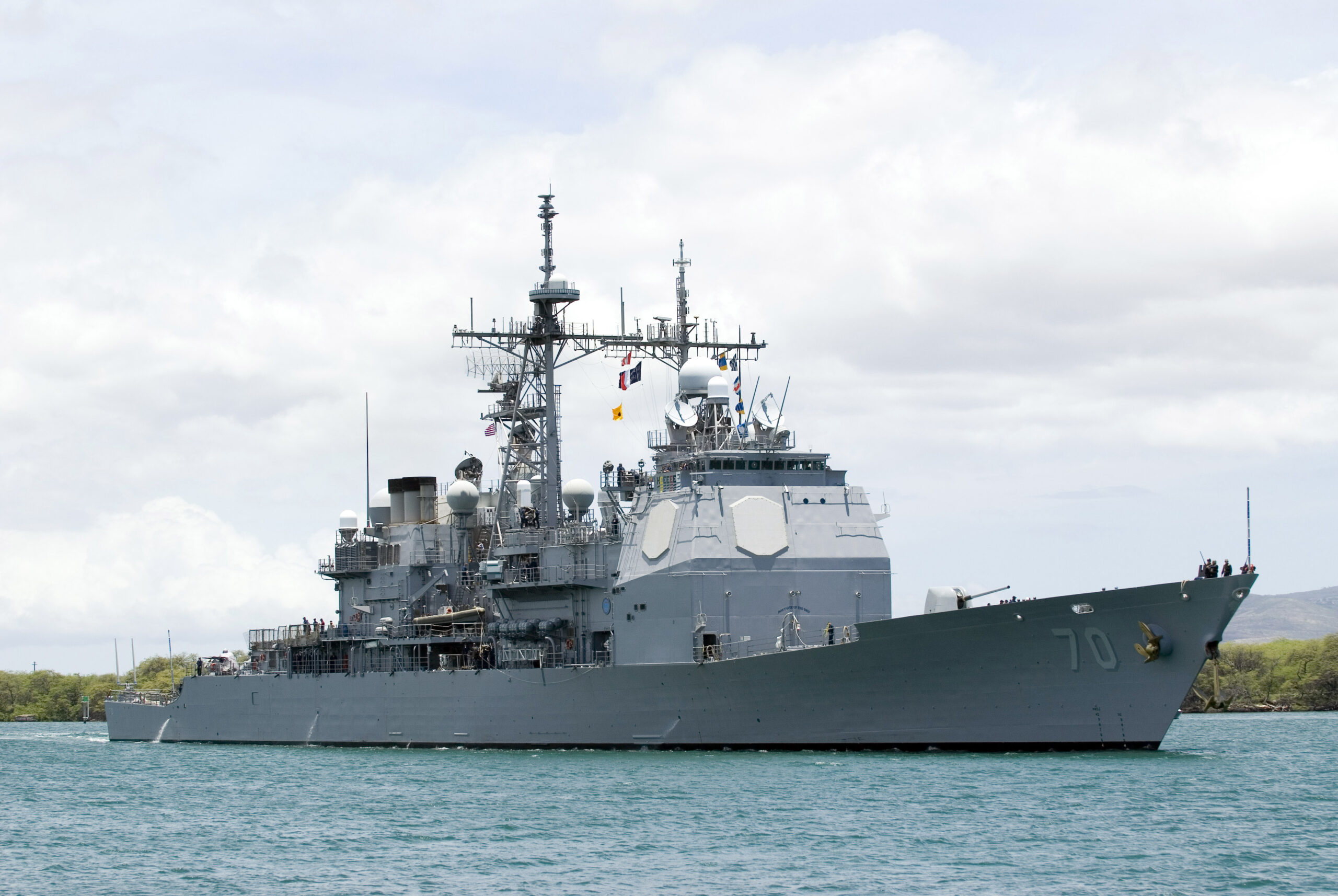
Block I
Only 11 SM-3 Block I missiles were built, and the first was handed over to the US Missile Defense Agency in 22 October 2004. Following four out of five successful intercepts using prototype missiles, a Block I round launched from the Aegis cruiser Lake Erie on 24 February 2005 intercepted and destroyed a short-range target missile launched from the Hawaiian island of Kauai.
Early trials of the SM-3 had used unitary (non-separating) targets representative of ‘Scud’-type ballistic missiles, but Flight Test Maritime 04-2 (FTM 04-2) flown on 17 November 2005 was made against an Orbital Sciences medium-range target (MRT-1) vehicle launched from the Pacific Missile Range Facility (PMRF) and had deployed a separating warhead. Lake Erie launched the second production example of the Block I missile interceptor missile, and after a two-minute flight, the kill vehicle intercepted the target warhead at an altitude of more than 161 km (100 miles) above the Pacific Ocean. The ship’s Aegis system and PMRF sensors both confirmed a direct hit.
Block IA
When a US National Reconnaissance Office (NRO) radar-imaging spacecraft launched on 14 December 2006 suffered a total electrical power failure within a few hours of being launched, the US Navy was tasked with destroying the spacecraft as it began to re-enter the atmosphere in order to prevent the satellite’s unused tank of hydrazine posing a potential health hazard if it landed on the ground.
A potential solution was available in the form of the Block IA interceptor, the first production version of the SM-3. This had been installed for the first time on the Shiloh in 2006 as part of the Aegis BMD 3.6 deployment.
One immediate problem was that the kill vehicle of the SM-3 was designed to acquire incoming ballistic missiles, which would represent a relatively hot target when seen against the background of space. The satellite would be travelling much faster than a warhead, and would be an inert cold target. As a result, a small batch of SM-3 Block IA missiles would have to be given modified on-board software, as well as additional instrumentation supplied by the US Missile Defence Agency (MDA), while the operational software of the Aegis system on the ships selected to take part in the operation would have to be replaced with a version optimised for the ASAT mission.
Three ships were assigned to the mission: Lake Erie (armed with two modified interceptors), the Arleigh Burke-class (Flight II) destroyer Decatur (DDG 73) armed with a single modified missile, and the Arleigh Burke-class (Flight I) destroyer Russell (DDG 59) which was to serve as an independent source of tracking data. Having detected the satellite and computed a targeting solution, at 10:26 EST on 21 February 2008, Lake Erie launched a single modified SM-3 missile from a location west of Hawaii. The resulting intercept took place 246 km above the earth and at a closing velocity of about 9.8km/sec. The resulting fireball suggested a hit as planned on the spacecraft’s hydrazine tank.
Block IB
The Block IA missile that became operational in 2014 used a seeker that operated in a single LWIR waveband, but the Block IB developed in conjunction with Japan introduced a two-colour version teamed with an advanced signal processor, changes intended to improve discrimination between threatening and non-threatening objects. An improved Throttling Divert and Attitude Control System (TDACS) gave the kill vehicle better manoeuvring capability during its approach to the target. A follow-on SM-3 Block IB Threat Upgrade (TU) standard incorporated upgraded discrimination algorithms intended to counter more sophisticated threats.
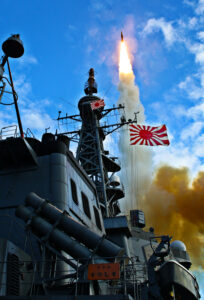
Credit: Missile Defense Agency
Block IIA
Block I and IA missiles had teamed a 53.34 cm (21 in) diameter booster stage with a 34.39 cm (13.5 in) diameter missile whose dimensions were similar to those of the earlier Terrier and Tartar. For the next-generation Standard Block IIA, the missile was the same 53.34 cm diameter as the booster, a size that remained compatible with the existing vertical launcher. The profile of the missile was fatter, but much of the extra girth represented internal volume for the additional propellant needed to provide a higher burnout velocity and greater range. It also allowed the carriage of a larger kill vehicle containing more divert fuel, and so better able to cope with higher closing speeds and manoeuvring enemy warheads, giving the Block IIA a limited capability against intercontinental-range ballistic missiles.
The latter feature was successfully demonstrated on 16 November 2020, when a trial designated FTM-44 ‘Stellar Lance’ used a Block IIA round against an ICBM-T2 target launched from the Ronald Reagan Ballistic Missile Defense Test Site on Kwajalein Atoll, with a target location within an ocean area northeast of Hawaii, where the John Finn (DDG-113) was located. The ship used the Command and Control Battle Management Communications (C2BMC) network to track the incoming round via off-board sensors, then launched a single interceptor and destroyed the simulated threat.
During a follow-on trial conducted five days later, Lake Erie fired an SM-3 missile against a ballistic missile target that was still in the ascent phase of flight. The Aries target had been launched from the Pacific Missile Range Facility on Kauai. As it rose above the ship’s radar horizon, it was tracked by the Aegis weapon system, and within two minutes after target launch, the ship fired a development-standard SM-3 interceptor. The missile’s kinetic warhead acquired, tracked, and successfully demonstrated aimpoint shift control, and hit the target while the latter was still approximately 161 km (100 miles) above the ocean.
SM-3 Block IIA remains the current production variant, although deliveries for FY2021 were delayed as a result of production being halted due to an investigation into test and component anomalies, and some delivered interceptors had to be re-worked. In June 2022 the company received a USD 867 M Missile Defense Agency contract for further deliveries of SM-3 Block IIA missiles.
Block IIB
The programme to develop an SM-3 Block IIB missile began in 2010, and in the following year Boeing, Lockheed Martin, and Raytheon were awarded contracts for the concept definition and program planning phase. The new variant was intended to provide some boost-phase intercept capability against intermediate and long-range ballistic missile threats, and would be able to counter first-generation ICBMs attempting to attack the continental USA.
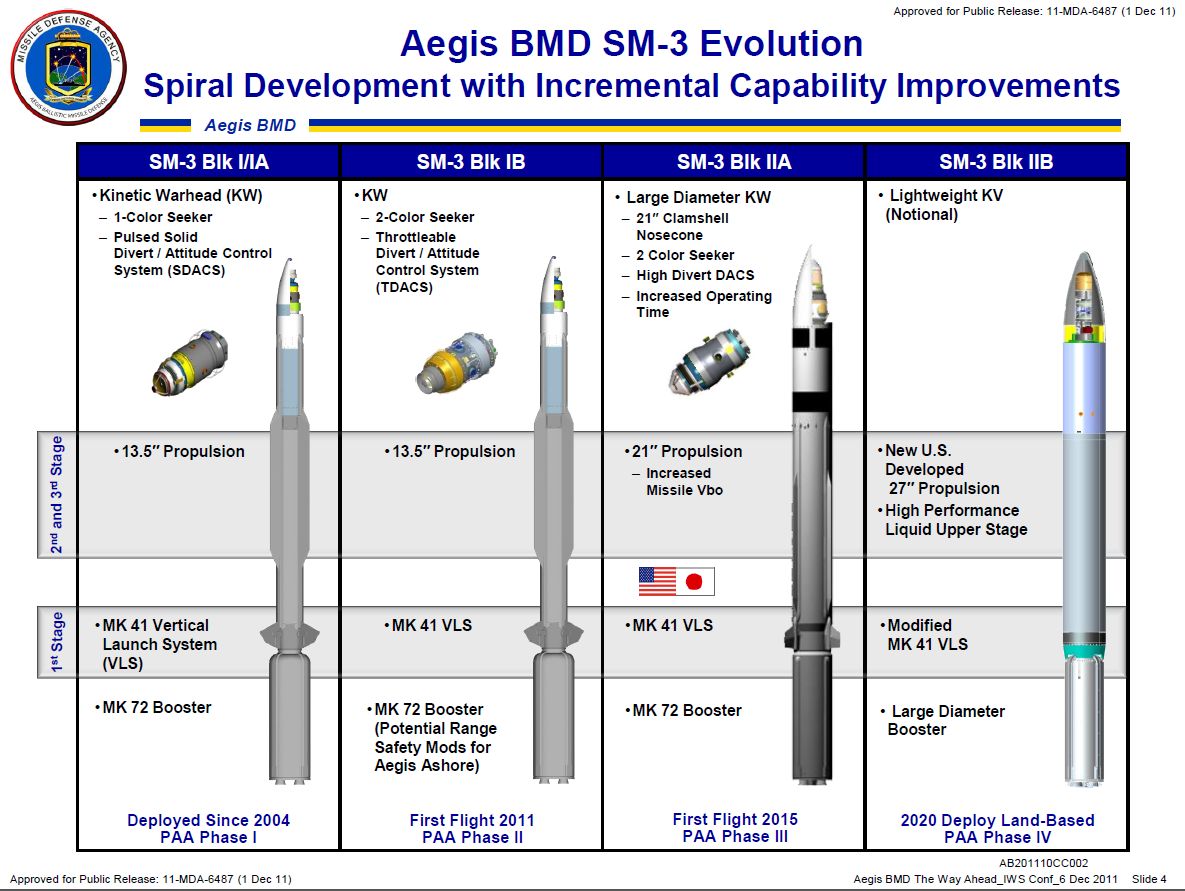
Credit: Missile Defense Agency
It soon became obvious that major changes to the missile configuration were inevitable. In order to achieve the required the desired range and burnout velocity, the Block IIB missile would have to be significantly different to the Block IIA, with a diameter of 68.58 cm (27 in). The resulting missile and its larger-diameter booster would require a larger canister that would require modifications to the vertical launch system.
At first it was assumed that the SM-3 Block IIB interceptors would be based at the existing sites in Romania and Poland, but studies soon showed that the interceptor flight path from the Romanian site was not really suitable for the task of engaging an ICBM aimed at the USA, while the Poland site might have to launch the interceptor during the boost phase of the threat missile. A more suitable location for defence of the USA would be the North Sea. An Aegis ship positioned there would not have to launch its interceptors while the enemy ICBM was still in powered flight.
A major problem in developing a Block IIB missile suitable for both land and shipboard deployment was that its third stage was likely to use liquid propellants in order to achieve the desired performance. However in 1988 the USN had banned the use of liquid rocket propellants aboard its ships due to safety issues and the likely cost of the shipboard systems needed to combat propellant fires.
Although the US Missile Defence Agency had been expected to select one of the three companies in 2013, allowing the development, testing, and eventual production of the new variant, the Block IIB project was cancelled in March of that year.
Future
Another navy is due to become an Aegis user. In May 2021 the US announced the planned sale to Canada of four sets of the Aegis Combat System, four SPY-7 radars, three sets of the MK 41 Vertical Launching System, plus equipment, spare parts and technical support. This hardware is destined for use on the planned Canadian Surface Combatant, a class of frigates intended to replace the Halifax class multi-role frigates and the now-retired Iroquois class anti-air warfare destroyers. The lead ship of the new class will probably enter service in the early 2030s.
Aegis has now completed 40 years of USN service. According to Raytheon Missiles & Defense, SM-3 missiles have made over 30 successful space intercepts, and more than 400 interceptors have now been delivered to US and Japanese navies. In June 2022 the company received a USD 867 M Missile Defense Agency contract for further deliveries of SM-3 Block IIA missiles.
Assuming that the USN’s DD(X) class will have a service life of 30 years, Aegis seems likely to serve until 2060 or longer – almost a century from the time when the USN began the work on what was then the Advanced Surface Missile System.
Doug Richardson




